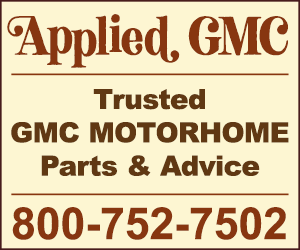Perhaps the silly question of the week, BUT, the rear body panel on my 1973, 26 footer Sequoia appears to be attached with large screws. I thought these panels were rivetted on. Anybody have an idea what type of screws they are, if they really are screws? Most have some rust and I'd like to replace them with SS before I paint her.
Rear Panel Fasteners.
- Thread starter janvlen
- Start date
You are using an out of date browser. It may not display this or other websites correctly.
You should upgrade or use an alternative browser.
You should upgrade or use an alternative browser.
Jan,
They are really screws. They have rusted. Some have successfully removed them to open the back. They are uncommon fasteners, but can be replaced with more common. Many have tried to remove them at this age and have had serious difficulty. That is what I remember of that.
Matt
They are really screws. They have rusted. Some have successfully removed them to open the back. They are uncommon fasteners, but can be replaced with more common. Many have tried to remove them at this age and have had serious difficulty. That is what I remember of that.
Matt
I believe this has been addressed on this forum. It is a somewhat special fastener but iirc someone found a suitable replacement. Since you're not removing the back panel, but instead replacing screws one at a time there should be no issue with trying to reinstall the panel.
Try searching this forum some more.
btw I believe I have a new, uninstalled screw somewhere in my gmc parts boxes. While removing the back dinette and building a bed platform, I found one that had been dropped and lost back in 1975/76. It was in a tight spot near the generator enclosure, under the tail light area.
Try searching this forum some more.
btw I believe I have a new, uninstalled screw somewhere in my gmc parts boxes. While removing the back dinette and building a bed platform, I found one that had been dropped and lost back in 1975/76. It was in a tight spot near the generator enclosure, under the tail light area.
Janvien,
This has definitely been discussed on this or the old forum. The screws are a specialty hi-low thread design but are replaceable. Search both forums and you'll find an answer. If you are leak free to start it shouldn't be that bad.
This has definitely been discussed on this or the old forum. The screws are a specialty hi-low thread design but are replaceable. Search both forums and you'll find an answer. If you are leak free to start it shouldn't be that bad.
Thanks Kendra...
OKAY!! I've watched the Bound's video several times, and still am slightly confused. It appears to me that I can (with a bit of luck) remove the original screws without disturbing the original inserts. ( I have a 1973 coach) Then I can drive in the new inserts and then install new SS bolts.
If I do that, what happens to the original inserts? Or do I have to remove the rear panel, then drive out the original inserts before installing the new ones?
The video isn't exactly clear on the process. Anyone out there who can enlighten my poor little pea brain?
If I do that, what happens to the original inserts? Or do I have to remove the rear panel, then drive out the original inserts before installing the new ones?
The video isn't exactly clear on the process. Anyone out there who can enlighten my poor little pea brain?
OKAY!! I've watched the Bound's video several times, and still am slightly confused. It appears to me that I can (with a bit of luck) remove the original screws without disturbing the original inserts. ( I have a 1973 coach) Then I can drive in the new inserts and then install new SS bolts.
If I do that, what happens to the original inserts? Or do I have to remove the rear panel, then drive out the original inserts before installing the new ones?
The video isn't exactly clear on the process. Anyone out there who can enlighten my poor little pea brain?
Are there originally inserts? I was under the impression that the screws went directly into the FRP. That's why they have the funny threads.
I think the early coaches 73-74....had inserts.
The retrofit Bounds was showing was only for the later years where the screws went directly into the FRP.
The retrofit Bounds was showing was only for the later years where the screws went directly into the FRP.
I use Helicoil and TimeSert in metal, I think the threads would be too fine for FRP use.
IIRC in Jims vid he said the original inserts need to be removed and then the panel repaired, after which the newer inserts with the dual pitch and replacement fasteners can be used.
I need to rewatch it (and review the thread referenced above) as I have several of the later style stripped or missing on mine....
IIRC in Jims vid he said the original inserts need to be removed and then the panel repaired, after which the newer inserts with the dual pitch and replacement fasteners can be used.
I need to rewatch it (and review the thread referenced above) as I have several of the later style stripped or missing on mine....
I always had good results with Porsches and the Helicoil however the Time Sert with some epoxy might be the best. Otherwise, I believe the Heli-Coil style is generally stronger.Heli-Coil has name recognition and easier to find but I prefer Time Sert. If you look at the design you'll see why. Heli-Coil is formed from wire. Time Sert is a casting.
These screws might work, haven't removed one to check size. .... McMaster

